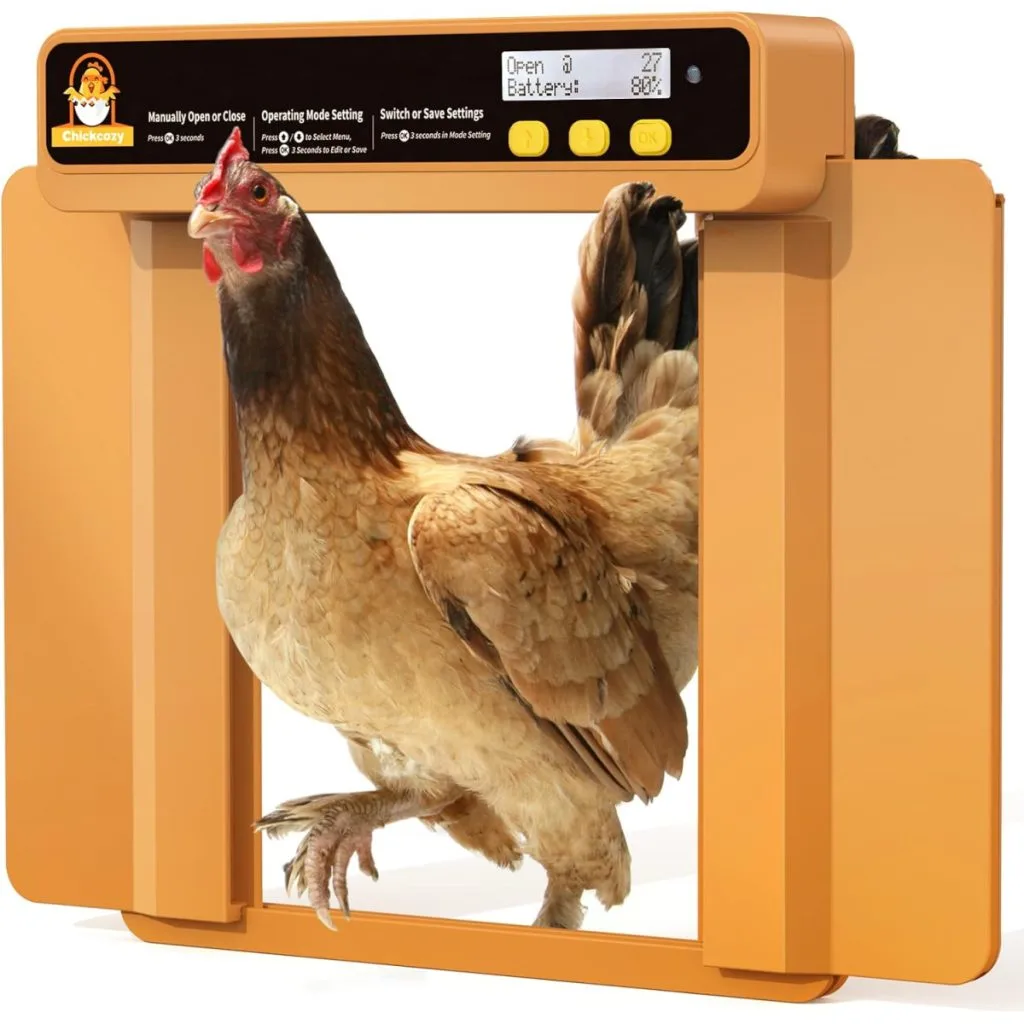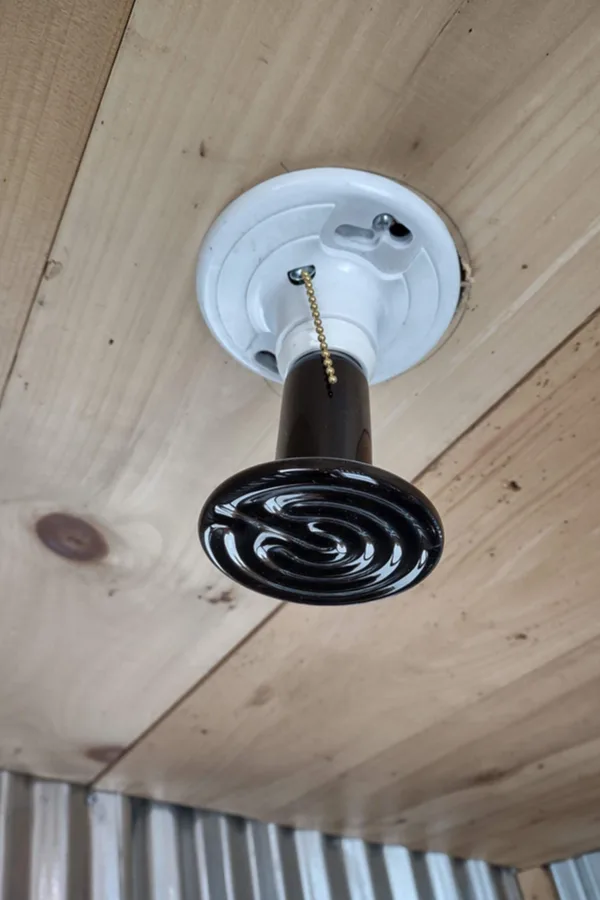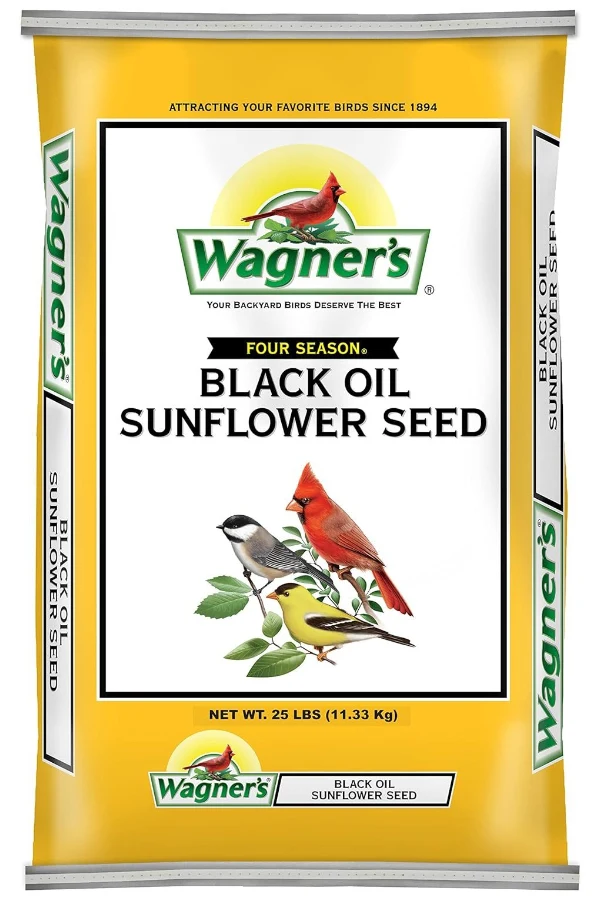One of the most frequent email subjects we get to our inbox in mid to late fall is about chicken care – or more precisely – how to protect chickens and keep them safe from the upcoming cold and snow of winter.
Depending on where you live, winter can bring a wide range of difficult conditions for a small flock. From freezing temperatures to howling winds, heavy snow and ice – winter weather can be tough. Especially when you consider that the ability to find insects, scratch and roam for chickens is often highly limited.
One thing you have working for you is that chickens are a lot tougher than you might think. Contrary to popular belief, they are not necessarily bothered by cold. In fact, their thick coat of feathers is more than enough to keep them warm in most situations – even extreme cold. That is, as long as a few other key needs are met!
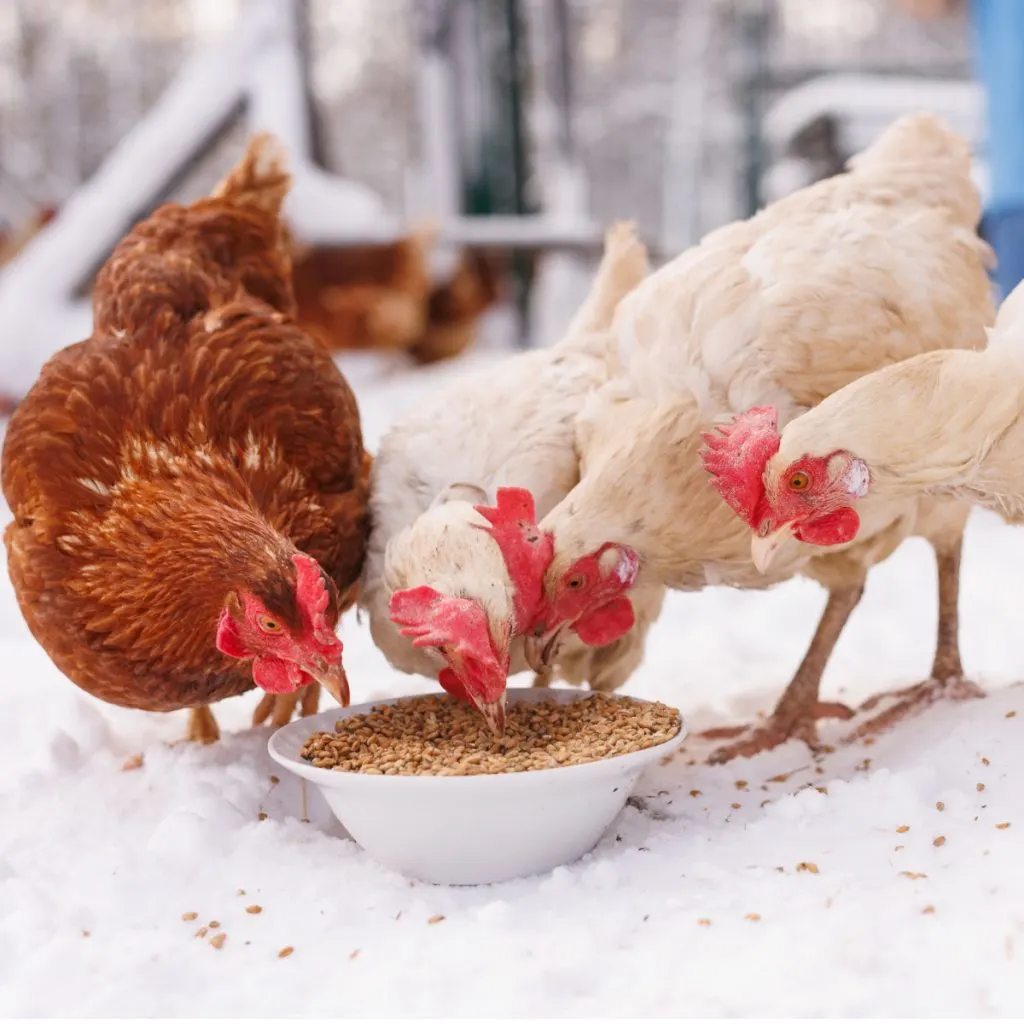
As you will see below, there are really 3 key things you need to do to keep your chickens safe through the long winter months. The good news is all three aren’t difficult or time consuming to do!
How To Protect Your Chickens From Winter – 3 Keys To Success!
#1 Creating A Safe Coop
As mentioned above, bitterly cold temperatures by themselves is not the issue for chickens in the winter. But what is important when it comes to their health and safety is that they are able to dry their feathers and have a draft free space to call home.
When a chicken’s feathers get wet and completely saturated, they lose their warming capability. Likewise, if their coop is drafty and wet – those feathers never have a chance to dry out. When that happens, their health can quickly be put in jeopardy.
When winter arrives, it is important to have your chicken coop be as winter-proof as possible. More than anything else, in cold winter climates, you need to keep wind, drafts and precipitation out of the coop.
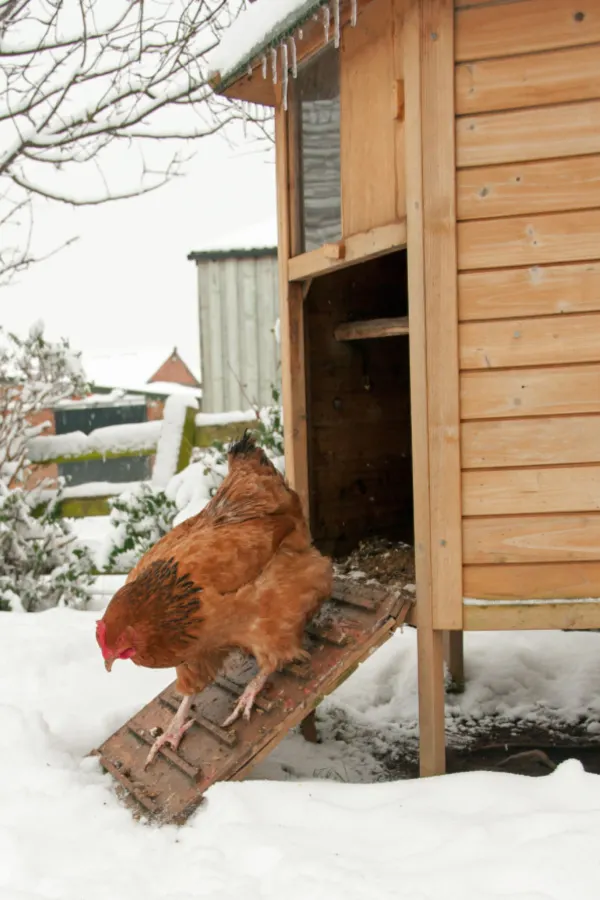
Open or screened windows can easily let blowing snow and chilly rains into the coop. When that occurs, it isn’t long before the chicken’s straw and bedding material becomes saturated as well. It can lead to an uncomfortable coop and one where your chickens are unable to dry out their feathers.
Sealing Off The Coop – How To Protect Your Chickens From Winter
As nightly temperatures begin to drop, closing off windows and screens with glass, plexiglass, or even clear plastic is a must. This not only keeps drafts out, but allows light into the coop during the day. Light that can be warming and vital to egg production – and your chicken’s health.
We like to use 1/4″ plexiglass, screwing it right into the window frames to keep the air and precipitation out. It is a better choice than glass which can often break, especially if you happen to have ornery chickens that love to peck at it!
Winterizing A Chicken Coop’s Door – How To Protect Your Chickens From Winter
Chickens will still venture outside during the day as long as the weather permits. But doors left open around the clock can drop the temperature of a coop dramatically. Especially at night when the temperatures can really plummet. This is where an auto door can save the day! Affiliate Link: Automatic Chicken Door
We keep our chicken doors closed completely from dusk to dawn. On non-stormy days, we keep it open during the day. But in the winter, we also install rubber flaps inside over the door to keep out the air and keep the coop warmer when the main door is open.
We make our own flaps by cutting up a rubber floor mat. Installation is as easy as screwing the pieces inside above the door. The chickens learn how to walk through the flaps fairly quickly, and it keeps the coop much warmer through the daylight hours.
Although covering windows and doors is vital to winterizing a chicken coop, it’s also important to make sure the coop still has some air flow for adequate ventilation. Fresh air to a coop is critical to keep poultry respiratory diseases at bay, and to keep chickens healthy.
If your coop does not have a vent for fresh air, now is the time to install one! Cutting in a vent near the roof line or on a side wall allows stale air to escape and fresh air enter the coop. Top vents are best as they do not bring drafts directly towards your chickens.
Warming The Coop – How To Protect Your Chickens From Winter
Now let’s tackle the subject of warming the coop. As we covered earlier, chickens are bothered more by drafts than cold. But that doesn’t mean it’s not important to keep some heat in the coop. A bit of heat will help to keep water and eggs from freezing and allow for more comfortable chickens. But that heat can come from natural sources.
Listen In To This Week’s Podcast Below!
We use what is known as the deep litter method to help warm and winterize our chicken coop. Instead of cleaning out all of the straw and manure in the winter, we simply add in a bit more straw each week to keep it fresh.
But as the manure below the straw breaks down, it gives off heat that helps to warm the coop. It is a method that has worked for many a chicken farmer for years!
Depending on how cold your location gets in the overnight, a supplemental heat source in addition to the deep litter method can be beneficial. If you have electricity available near your coop, installing a safe heat source can do the trick. Affiliate Link: 150W Ceramic Heat Emitter Heat Bulbs
There are now many models that are safe for chickens and fire prevention. Simply putting in an unprotected heat lamp can cause serious injuries and burns to your chickens, and can be a big fire risk as well
#2 Feeding Chickens The Right Foods In The Winter – How To Protect Your Chickens From Winter
Beyond a safe and draft free coop, a chicken’s diet is also vital to its health and well being in the winter. Chickens burn a lot more calories in the winter than in the summer, all in an effort to stay warm.
Much like any animal that braves the outdoors in winter, their metabolism increases to provide more energy to warm their body. And when metabolism increases, calories burn faster than ever.
For starters, you want to always make sure chickens have food on hand, but especially in the early morning and evening. The late calories can help them stay warm through the cold overnight while roosting. And when they wake up early, early feeding can help them replace what they lost overnight.
But in addition to making sure they have a steady supply of food, it’s also important in the winter to adjust the feed you are providing them. In the winter, chickens benefit greatly from additional carbohydrates.
Make sure your feed is well balanced, and contains a rich blend of protein and carbs. Pelleted feeds are among the best for winter feeding as they usually have a good balance of both.
Supplemental Feeding – How To Protect Your Chickens From Winter
Where you can really help your chickens fuel up is by adding supplements. Adding food sources such as cracked corn, black oil sunflower seeds and scratch grains can provide a big nutrient punch for chickens in the winter.
Beyond just filling them up, adding these supplemental feeds gives chickens a high dose of carbs to have plenty of fuel to stay warm. Black oil sunflower seeds are among the best. The thinner hulls make it easy for chickens to open them up. In addition, they are high in fat and calories.
- Affiliate Product Link: Black Oil Sunflower Seeds
- Affiliate Product Link: Cracked Corn Feed
#3 Providing Ice Free Water – How To Protect Your Chickens From Winter
Last but not least, in addition to having plenty of calories and carbs, chickens need to stay hydrated in order to keep their metabolism higher. Unfortunately, when the weather turns frigid, the water supply in many coops can easily freeze. And without access to water, it can be a struggle for chickens to survive.
There are many options when it comes to keeping fresh water in the coop. It can be as simple as replacing the water each day when it freezes over with a new container. We did this for years in our first coop. We would bring one water pail inside to thaw, and replace with another.
After years of trudging in and out of the cold, we finally went with a heated poultry watering pail. There are many types on the market – some use a warming base to put your water pail on top, while others heat the water in a single water unit to keep it from freezing.
Here is to winterizing your chicken coop and having happy, healthy chickens all winter long! For more on our chickens here at the farm, check out our new rolling hay wagon coop article – Creating The Perfect Little Mobile Chicken Coop – From An Old Hay Wagon!
Happy Gardening! – Jim & Mary
Old World Garden Farms
Jim and Mary Competti have been writing gardening, DIY and recipe articles and books for over 15 years from their 46 acre Ohio farm. The two are frequent speakers on all things gardening and love to travel in their spare time.
As always, feel free to email us at thefarm@owgarden.com with comments, questions, or to simply say hello! You can sign up for our free email list in the subscribe now box in the middle of this article. Follow us on Facebook here : OWG Facebook. This article may contain affiliate links.

